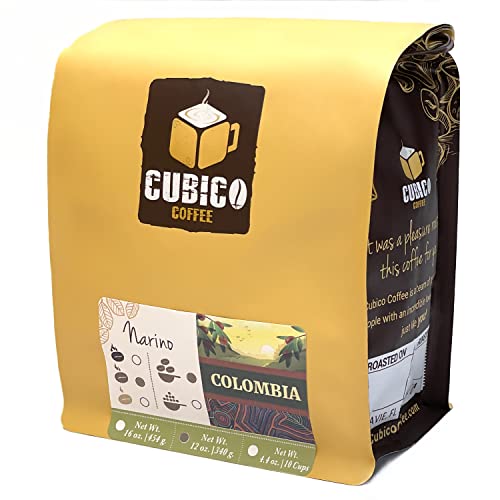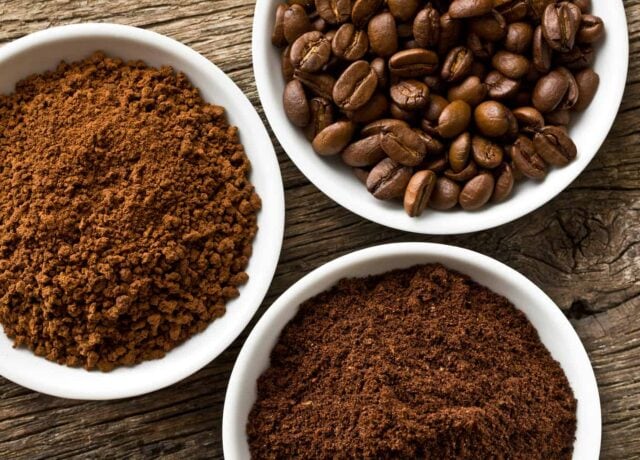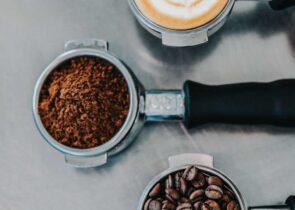Colombian coffee is a favorite of many coffee connoisseurs. But what is it about these beans that makes them so highly recommended?
Stick around for a full breakdown of what’s happening in the Colombian coffee bean industry, and meet some of our faves of Colombian origin.
At A Glance: Our Top 5 Picks for Columbian Coffee
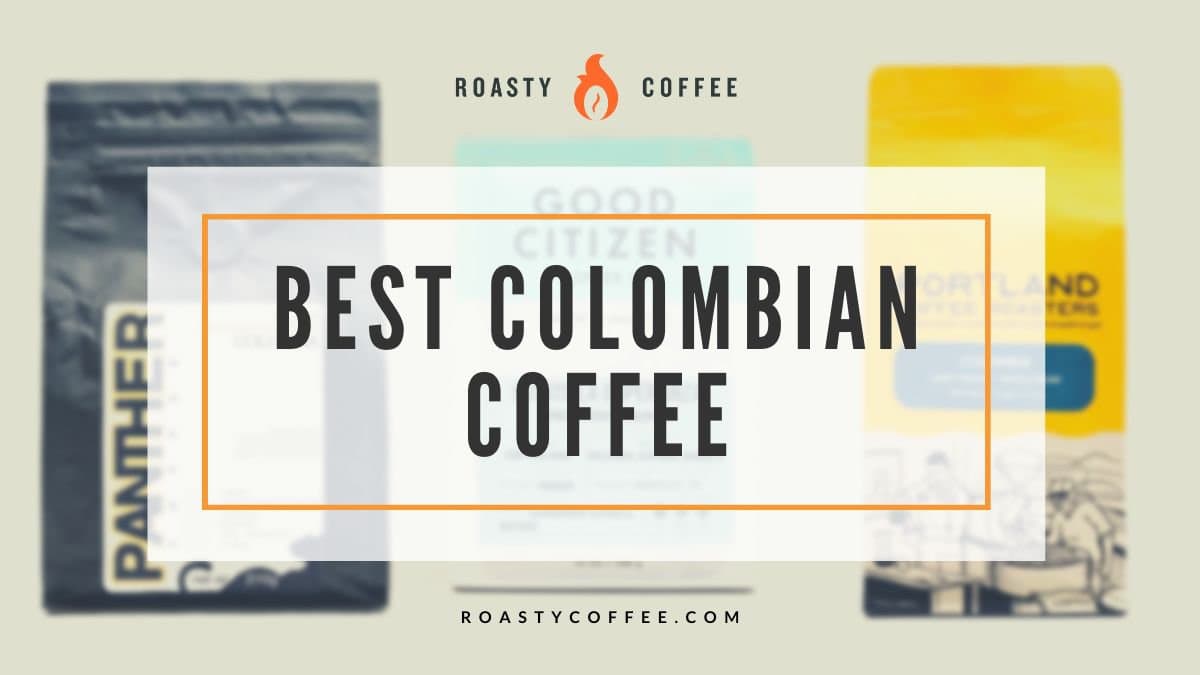
Quick Summary: The Best Columbian Coffee
 | Our Top Pick Good Citizen Coffee Co. - Estate La Esperanza |
| Check Price → |
 | SPARROWS COFFEE - JOVEN CAUCA |
| Check Price → |
 | Steady State - Magdalena |
| Check Price → |
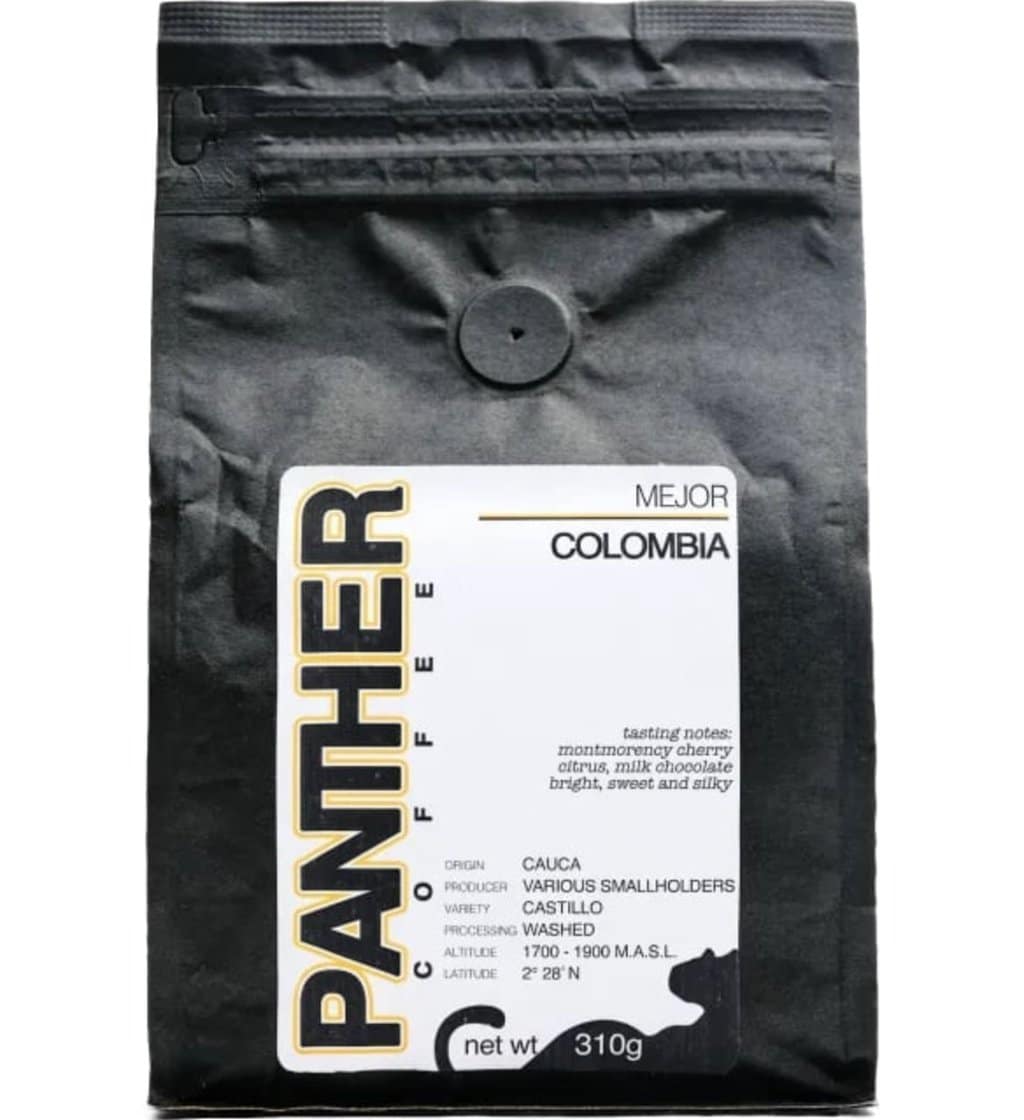 | Panther Coffee - Mejor |
| Check Price → |
 | Portland Coffee Roasters - Colombia |
| Check Price → |
 | Temple Coffee Roasters - Colombia Geiner Vasquez |
| Check Price → |
 | Portrait Coffee - Double Double |
| Check Price → |
 | Fresh Roasted Coffee - Dark Colombian Supremo |
| Check on Amazon → |
 | Juan Valdez - Organic Gourmet Medium Roast |
| Check on Amazon → |
 | Cubico Coffee - Nariño Coffee |
| Check on Amazon → |
 | Volcanica Coffee - Colombia Supremo Andeano Estate Coffee |
| Check on Amazon → |
 | Koffee Kult - Huíla Coffee |
| Check on Amazon → |
 | Peet's Coffee - Luminosa Breakfast Blend |
| Check on Amazon → |
 | Java Planet - Colombia Organic |
| Check on Amazon → |
What is so special about Colombian coffee?
Colombia is the third-largest coffee-producing country, ranking behind Brazil and Vietnam and accounting for about 12 percent of the world’s joe production. More than 500,000 coffee-growing families live in the country.
Typically, Colombian beans are darker roasts and favored for espresso brewing. However, medium and lighter roasts do well in bringing out this coffee’s remarkable taste.
Always Arabica
We suspect one of the biggest reasons many java lovers rely on a Colombian product to brew their morning cup is because the stuff is almost exclusively Arabica coffee beans.
Arabica beans are considered superior to Robusta coffee because of their mild flavor, so their domination of Colombian coffee bean production speaks to the overall quality of the joe.
Colombia is one of only a few countries, including Costa Rica, where this is a reality. Expect to find the following Arabica coffee varieties in this country: Typica, Bourbon, Caturra, and Maragogype.
Supremo vs. Excelso Beans
Two words you may see on bags of Colombian coffee are Supremo and Excelso.
Contrary to popular belief, these terms aren’t descriptors of different types of coffee beans; instead, they refer to the size of the beans.

Of the two, Supremos are the largest, with a screen size of 17 compared to the Excelso beans’ 15 to 16.
Screen sizing is typically the last step of green coffee production, and it involves running the coffee through a sorting machine.
We know what you’re thinking: why does the size of the bean matter? How big your beans are probably doesn’t make a difference to you, but it does play a role in how much they cost and how they are roasted.
Roasty Rankings: Our Picks for Best Colombian Coffee
Alright, Roasty reader, we’ve kept you in suspense long enough; it’s time to dig into the buying guide.
We’ve researched the best coffee beans sold by specialty roasters and Colombian coffee brands. We hope this helps you find the perfect joe for sipping a piping hot mug of drip in the morning or slurping down your afternoon cold brews.
Good Citizen Coffee Co. – Estate La Esperanza

Good Citizen Coffee Co. - Estate La Esperanza
So juicy, so chocolaty, so delicious. Intensely fruity notes of kiwi and strawberry meet a rich, chocolaty body and a deep, winey sweetness.
The first option for coffee lovers shopping for quality Colombian beans comes from Good Citizen Coffee Co. You may know this brand by its previous name, Stay Golden Coffee Co., but if this is the first time you’ve heard of either of these coffee brands, allow us to introduce you.
This Nashville-based roaster aims to appeal to all kinds of java drinkers while advocating for biodiversity and forging genuine relationships with farmers.
Rigoberto and Luis Herrera grow Good Citizen’s Colombian beans at Cafe Granja La Esperanza, and like the estate’s other joes, this one is worth adding to your home brewing setup. This medium roast has a buttery smooth flavor and chardonnay and panela tasting notes.
SPARROWS COFFEE – JOVEN CAUCA

SPARROWS COFFEE - JOVEN CAUCA
Produced by the Cafinorte co-op’s Young Coffee Producers Program, this coffee has a smooth body and comforting chocolate flavors up front, with enough cherry cola depth to make for a really fun cup.
We don’t know which is more impressive, the fact that this medium roast coffee blend from Sparrows Coffee is a selection from the world’s youngest Q grader or that the Cafinorte Co-op’s Young Coffee Producers Program produces it.
A Q grader is someone who evaluates beans based on Specialty Coffee Association practices.
The answer to the above question may vary depending on who’s asked, but there’s one thing we think all coffee lovers can agree on: this blend is a lot like springtime in a cup. Hints of citrus, marmalade, violet, and chocolate line each sip of this medium roast coffee.
Plus, it supports the future of Colombia’s young coffee farmers, which is fitting since “Joven” translates to “young.”
Steady State – Magdalena

Steady State - Magdalena
Notes of fresh toasted walnut are rounded out by a splash of grapefruit acidity and hints of cocoa.
Something about Steady State’s Magdalena reminds us of summertime. Maybe it’s the brightly colored packaging or the sweet notes of panela, orange blossom, and caramel. It may even be a combination of both factors — we’re not sure. Either way, we can’t help but think of sunshine and warmer weather every time we think of these Colombian beans.
Before being roasted in Carlsbad, California, the Magdalena coffee beans are grown and harvested by several smallholders in Colombia’s Pitalito region. This stuff is said to best represent that area’s taste profiles, so if you’re ever curious about Pitalito joe, start your research and taste-testing with Steady State.
Panther Coffee – Mejor

Panther Coffee - Mejor
Fruity and sweet, with a juicy note of cherry bolstered by a deep, nutty sweetness.
Time for a Spanish lesson, Roasty readers. “Mejor” means “best,” and considering that’s the name Miami-based roaster Panther Coffee gave this batch of Colombian beans, it’s probably safe to assume it’s good coffee.
We can’t say for sure that the coffee is the best, but we know we like it and think you will, too.
This blend of beans (with notes of cherry, sweet chocolate, and tangy citrus) comes from smallholder producers in Cauca, Colombia. Run this joe through your coffee maker to fill your cup with bold flavor and lingering sweetness.
Panther Coffee partners with Coffee for Peace to combine various producers’ best offerings into one shared lot. This alliance means Colombian farmers will be paid a premium for their joe, and consumers will easily be able to enjoy the best of Cauca, Colombian coffee plantations’ beans.
Portland Coffee Roasters – Colombia

Portland Coffee Roasters - Colombia
Loud lemony acidity meets chocolaty sweetness and notes of cherry for a delicious Colombian cup.
If you’re in the market for a bag of quality coffee beans to brew in your trusty Chemex, look no further than Portland Coffee Roasters’ Colombia joe.
This coffee, which has noticeable notes of wild berry and sugar cane, grows near Quindio on the western side of the Central Andes. After being harvested, the joe makes its way to — you guessed it! — Portland for light roasting before being sent off to your coffee station.
Since these Colombian beans are marked by hints of berries and tropical fruits, drinking a mug of this single-origin brew will give you all of the vacation vibes, even if you’re downing it as you drive to your nine-to-five.
You should know, however, that this product isn’t available pre-ground. So, if you purchase this whole bean coffee, you’ll need a separate coffee grinder on standby.
Temple Coffee Roasters – Colombia Geiner Vasquez

Temple Coffee Roasters - Colombia Geiner Vasquez
A pleasant, almondy sweetness gives way to lemon aromatics and floral notes of white grape as the cup cools.
Colombia Geiner Vasquez beans from Temple Coffee Roasters have plenty of fruit flavors, so downing a mug of this medium roast is like eating your daily serving of fruit!
Alright, maybe not, but we still think the medium-bodied brew is a great way to kick off a busy day.
These medium roast beans, named after producer Geiner Montano Vasquez, manage to be flavorful yet not overpowering. The brew they create offers pleasant spurts of apricot, citrus, and walnut in every single sip.
The resulting cup has a clean, balanced flavor and is downright delicious.
Portrait Coffee – Double Double
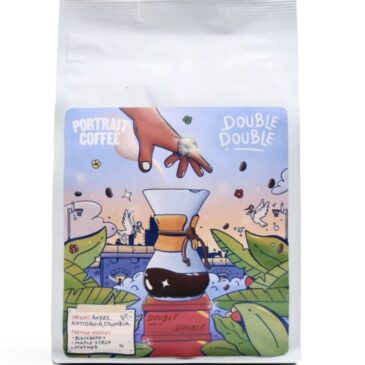
Portrait Coffee - Double Double
A rich, cozy body and slightly roasty profile is complimented by some citrusy aromatics and chocolaty sweetness.
The medium roast beans used for Portrait Coffee’s Double Double joe start their lives in Andes, Antioquia.
12 producers contribute to the community lot on which they’re grown, and once harvested, they make their way to Portrait’s headquarters in Atlanta, Georgia.
You might assume that Double Double is a collaborative project since 12 different producers are involved in the growth process, and you’d be correct. That collaborative spirit is what inspired this batch of beans’ name.
Consumers get double the flavor and double the purpose: drinking quality coffee with a cozy feel, thanks to its blackberry, maple syrup, and nutmeg tasting notes, while investing in the future of coffee farming.
Fresh Roasted Coffee – Dark Colombian Supremo
This medium-dark to dark roast Colombian bean shifts from the more traditional taste and favors earthier, more complex flavors.
The dominant notes taste like cherries and play well with a subtle, honey-toned sweetness. That sweetness, plus mild acidity, makes for a delightful cup.
This brew is full-bodied with a thick mouthfeel. So, if you’re looking for something a little different from other Colombian coffee options, give these beans a try.
Juan Valdez – Organic Gourmet Medium Roast
Juan Valdez is a fictional farmer whose face and logo are associated with excellent-quality Colombian beans and the namesake of this Colombian-based company.
The brand offers a wide range of products from several of the country’s growing regions. Between its gourmet, sustainable, and premium coffee lines, you won’t have any trouble picking something for your morning brew.
We’re highlighting the brand’s bestselling certified organic coffee. It’s USDA-certified organic, Japanese Agricultural Organic Standard (JAS) approved, and EU Organic.
These medium-roasted beans have a very mild and pleasant acidity and work well as a smooth breakfast coffee, but if you prefer to start your day on a more intense flavor note, consider giving the brand’s Bold option a try.
Cubico Coffee – Nariño Coffee
As indicated by its name, this bag of coffee comes from Colombian coffee growers in Nariño. This area is part of the southern region and the trio of departments dubbed the “new Colombian triangle.”
These beans are grown in rich, volcanic soil at high altitudes, yielding results that are nothing short of incredible.
This Colombian brew boasts a smooth mouthfeel and powerful, citrusy aroma that matches its flavor profile. And speaking of flavor profile (you know, the most significant part of any coffee), the Nariño blend has a unique one. Notes of lemon, lime, and maple brown sugar sweetness come together to create a cup that leaves behind a smooth finish.
Volcanica Coffee – Colombia Supremo Andeano Estate Coffee
Volcanica Coffee‘s medium roast hails from a coffee estate in the Andes mountain range. Why does this matter? Well, this location offers the optimal altitude for growing high-quality beans. And fortunately for consumers, that quality shows in the brew.
This single-origin coffee is a prime example of why the region and brand are so well-loved.
Volcanica Coffee is a Roasty favorite. So, we feel confident saying you can count on greatness in taste and sustainability with the brand’s Colombia Supremo beans.
Scoop a few tablespoons of this stuff into your coffee maker, and you’ll enjoy a smooth, balanced, and light-bodied brew in just a few minutes. Savor notes of fruit, nuts, and dark chocolate as you enjoy your morning coffee.
If you tend to reach for earthier joes, pick up a bag of Volcanica’s Colombian peaberry beans. These have no shortage of malt, walnut, and wood or cherry-toned chocolate flavors.
Koffee Kult – Huíla Coffee
Like Nariño, Huíla is one-third of the new triangle pumping out top-notch specialty coffee. And this batch of joe from Koffee Kult is no exception.
This brew first catches your attention with its intense, chocolatey aroma and keeps your interest with notes of caramel, chocolate, and cherry.
Compare Koffee Kult’s brew to the typical Colombian coffee, and you’ll find it has a milder acidity level, resulting in a cup that’s both clean and sweet.
Peet’s Coffee – Luminosa Breakfast Blend
This batch of beans from Peet’s Coffee made our list of best Colombian coffees for a couple of reasons, but before we dig deeper, be warned: this is a blend of Colombian and Ethiopian joe. So, if you’re strictly a single-origin fan, you probably won’t be crazy about this brew.
We think Peet’s offering is an excellent option for anyone interested in trying good Colombian joe without paying the premium price tag.
The pleasantly mild brew boasts a floral aroma, courtesy of the Ethiopian beans, and a sweet taste thanks to passionflower and stone fruit notes.
Plus, because it’s a light roast, it’s a good fit for people who get a kick out of more delicate profiles and bright acidity.
Java Planet – Colombia Organic
If you’re concerned about whether or not your java meets specific sustainability standards, Java Planet has you covered. I
ts single-origin Colombian beans are USDA-certified organic, Fair Trade-certified, and Rainforest Alliance Certified. Freshly brewed coffee without a side of guilt? That sounds pretty good to us!
Once you’ve brewed these beans (we recommend doing so with a pour-over, by the way), you’ll end up with a cup of balanced coffee with notes of nuts and cherries.
It tastes and feels classically Colombian, just a little softer. If something like that seems right up your alley, don’t hesitate to check these medium-dark beans out.
Regional Variations
There is a good bit of regional variation in Colombian coffee. However, a few identifiable features seem to be common to all.
First, a cup of coffee brewed with Colombian beans tends to be mild and well-balanced, with a medium body and bright acidity. The flavor profile often includes fruity notes ranging from tropical to red berry and apple. You’ll often find chocolate, sugar cane, and floral notes in these beans.
As far as smell is concerned, expect Colombian joe to have a somewhat sweet aroma marked by citrus, fruits, and hints of spice.
Not all Colombian coffees are equal, though. The above baselines can and often do shift depending on the region where the beans are grown.
There are over 22 coffee-growing regions in Colombia, and they’re all separated into four main zones.
Northern Region
Coffee from the northern region tends to have more prominent notes of chocolate and nuts, less acidity, and more body than other Colombian coffees.
As far as the growing environment is concerned, this region has only one dry and one wet season. These are from December to March and April to November each year. As the wet season approaches, the coffee blooms and is eventually harvested at the end of the same season (around early November).
The growing conditions vary depending on the subregion. Some are similar to Central America, while others are more exposed to sun radiation, forcing farmers to utilize shade.
Central Region
The central region has a couple of the most well-known and renowned subregions of Colombian coffee production. Generally, the coffee from this area tends to have herbal and fruity flavor notes and high acidity.
You may have seen the acronym MAM when perusing premium Colombian coffee brands. It stands for Medellin, Armenia, and Manizales, all located in the central region and known for producing high-quality coffee beans.
The Colombian Triangle or Coffee Belt is in the central zone. This specific area produces most of the coffee exported from this country and includes Caldas, Risaralda, and Quindío. These areas combined have a pretty significant coffee output. Antioquia and Tolima are two large coffee-producing areas located in this zone.
Something else to note about the central region is that it has two harvest seasons, thanks to having two distinct sets of wet and dry seasons. So, this zone’s coffee growers can produce twice the amount of excellent coffee beans.
Southern Region
You’ll find intense acidity and hints of citrus in beans grown in the southern Colombian coffee region. And since this area lies closer to the equator and has higher altitudes, both of which are associated with growing the most delicious coffee, you can bet that the java that originates here will be pretty darn good.
Some people describe the grouping of Nariño, Cauca, and Huila, all found here, as the “New Colombian Coffee Triangle.” This area’s claim to fame is producing specialty joe with fruity notes, hints of caramel, and a distinctive aroma.
Coffee farms here are smaller than in other regions. The south zone also has one wet and one dry season, but harvesting happens in the spring and summer months instead of the fall. This is part of what allows Colombian growers to sell their beans year-round.
Eastern Region
Colombia’s final coffee-growing zone, the eastern region, is also the smallest. It includes only Arauca, Casanare, Meta, and Caquetá. Though this region has a climate similar to the northern region, it has more rainfall and higher humidity levels.
Coffee growth in this region is a high priority, and the emphasis is on helping farmers grow the size of their farms and figuring out which bean varieties are best suited to the area.
Coffee Crisis?
A couple of factors have affected and continue to hurt the Colombian coffee industry. These have led to the current “coffee crisis,” which some say has been ongoing since the 1990s.
Market Prices vs. Production Cost
First, the global market price for coffee is almost entirely detached from Colombia’s production prices. Instead, it’s set in New York and is primarily dictated by the United States’ monetary policy and the mammoth Brazilian and Vietnamese markets.
Though they work hard to compete with other industry giants and maintain quality control, Colombian farmers make meager wages. Meanwhile, many roasters and distributors profit from their products more than the farmers.
Pests
Recently, many Colombian farms have battled pests that are devastating to crops.
In 2018, the coffee borer beetle and two destructive fungi threatened around 500,000 family-run farms, according to NBC. Before that, coffee leaf rust caused a 31-percent decrease in coffee production in just a few short years.
Climate Change
Like many other world regions, climate change is a major concern for Colombian coffee farmers.
Shifting temperatures and rainfall levels have significantly impacted crop growth and yields, devastating many smaller coffee estates across the country.
Future Outlook
There are conflicting opinions on whether the coffee crisis issue is getting better or worse. However, it’s clear that moves toward sustainable practices, like Fair or Direct Trade, help improve Colombian farmers’ livelihoods.
With nearly four million people relying on the country’s coffee industry, sustainability is vital. While many can’t get certifications due to costs, roughly 42 percent of Colombian farms have some degree of sustainable practices.
The Colombian Coffee Federation (FNC) has pledged to achieve sustainability across the country’s coffee industry by 2027. If achieved, this could undoubtedly improve the outlook for coffee production there.
Frequently Asked Questions
Is Colombian coffee strong?
You’ve probably heard someone say Colombian joe is more potent than regular coffee. While this is a common myth, it’s just that: a myth.
Though things like the preferred method of brewing and roast levels ultimately determine just how strong the contents of your cup are, Colombian coffee is generally weaker and gentler than other countries’ joe.
Which is better, Colombian or Brazilian coffee?
Both Colombia and Brazil are known for producing some of the finest coffee in the world. But which country’s beans make the better brew? That depends on your preferences, but here’s some information about these coffees to help you determine which joe you’ll find most pleasing.
You’ll probably enjoy Brazilian coffee’s balanced body most if you’ve got a sensitive digestive system. These beans’ lower acidity levels make them easier to stomach than Colombian java.
This typically dark roast coffee is also a good choice for coffee enthusiasts who like to switch brewing methods from time to time, as it’s easily adaptable to multiple kinds of machines.
If you don’t care whether or not you’re drinking low acidity beans or are more inclined to sip something with a heavy-bodied flavor, Colombian is more likely to be your coffee of choice. It makes a fruitier, more well-rounded cup of coffee than Brazilian java does.
As a plus, Colombian coffee is easier to find than Brazilian beans. The latter tends to be used for bean blends, while the former is more likely to be sold as a single-origin coffee.
Why is Colombian coffee so good?
Colombian joe is known for its signature rich flavor, which results from where and how the coffee plants are grown and the processing methods used on the beans.
The country has the perfect geography for coffee cultivation, thanks to its excellent climate, nutrient-rich soil, and ideal rainfall.
Plus, each green coffee bean grown in Colombia is hand-picked. That means only the best beans make it into your cup, making each sip more satisfying than the last.
Wrapping up
Whether you run it through an espresso machine to fully experience its body, acidity, and aftertaste, or press out a smooth and balanced brew with an Aeropress, high-quality Colombian coffee won’t disappoint.
And since there’s a variety of regional profiles to choose from, there’s something out there that will charm everyone’s taste buds.
Considering the current state of the Colombian coffee industry, we highly recommend you do thorough research before buying anything. You’ll want to choose a brand that’s looking out for the future so we can all continue enjoying top-notch Colombian coffee products.
Happy Caffeinating!



